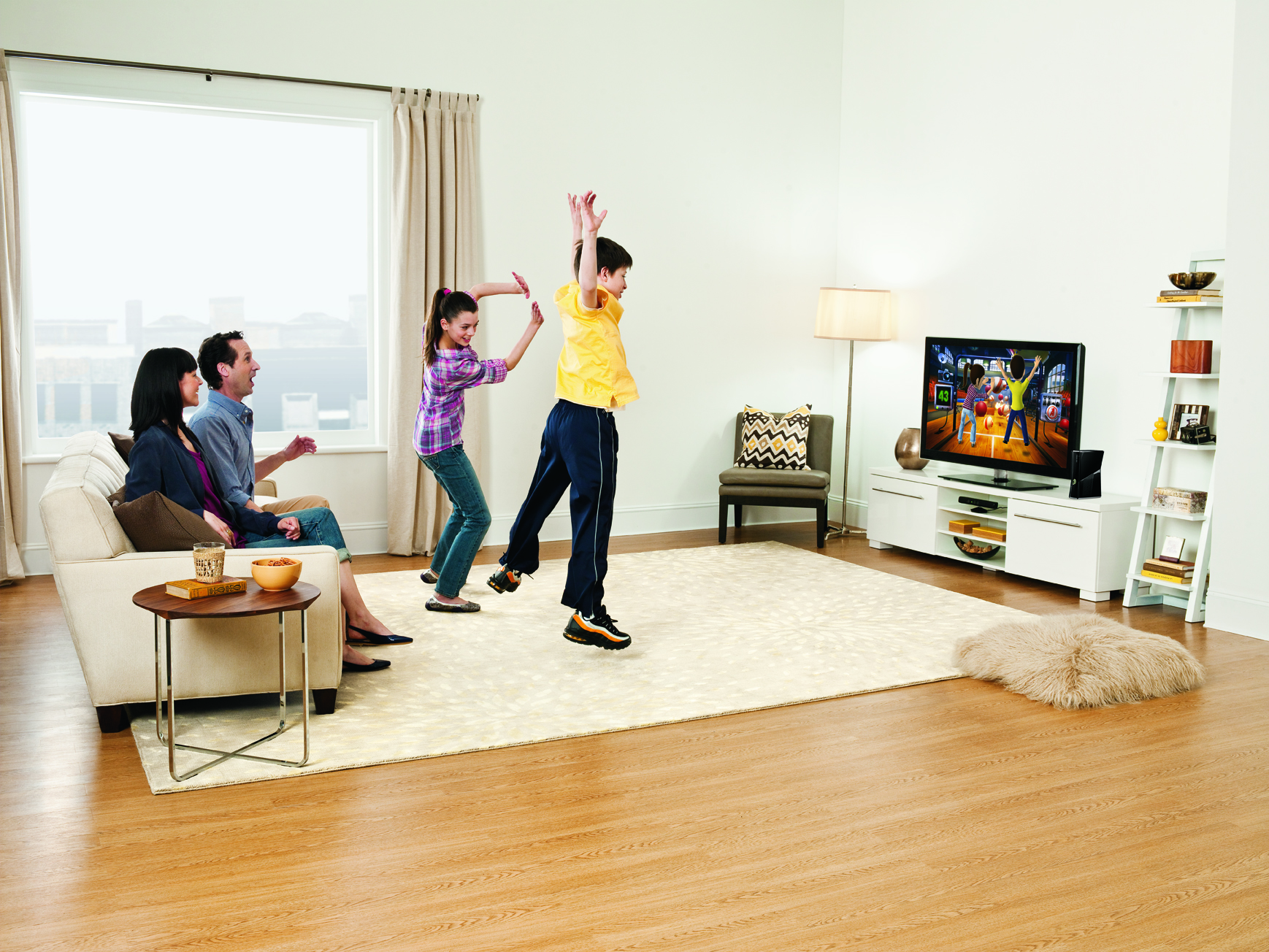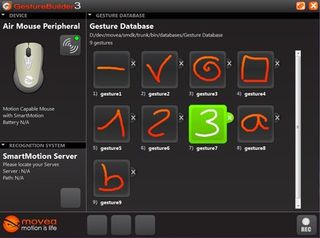Why the future of TV is gesture controlled
Are Wii-style gestures and voice commands coming to your TV?

Who needs buttons and onscreen menus when our hands and feet lay idle?
It was the Nintendo Wii that first got us moving, before augmented reality apps and games-stuffed smartphones had us waving them in a ridiculous figure-of-eight, but so far the humble television has remained stoically still.
As the dust settles on CES 2012 that's all set to change, with the big TV brands revealing in Las Vegas that motion sensors will be embedded in upcoming smart TVs of the very near future.
The rise of new two-way IPTV services on both smart TVs and set top boxes looks set to bring not just point-and-click Wii-style remotes, but gesture recognition to control web surfing, app-based games, and to navigate TV schedules.
Smart TVs already exist, of course, but the jury is out on exactly how clever they really are. Many TVs can be networked, though the viewing of videos on YouTube and BBC iPlayer, perhaps with a virtual remote app on a smartphone, is about as interesting as most of them get.
Basic gesture control
Content is ever-changing, but it's the way we use TVs that will change most in the next five years. Hand gestures require only a cheap webcam, while voice control is becoming more accurate; the dashboard of an Xbox 360 fitted with a Kinect can now be controlled with spoken instructions after virtually no training, and it's coming to Windows PCs soon.
Samsung and LG revealed their new ranges of TVs will indeed feature 'intuitive' control. That used to mean a well thought-out remote, but now requires a conversation with a TV.
Get daily insight, inspiration and deals in your inbox
Sign up for breaking news, reviews, opinion, top tech deals, and more.
On Samsung's upcoming top-of-the-line Smart LED 8000 series launched this Spring – as well as on its 55-inch dual core Super OLED TV due later this year – we'll see a built-in high definition camera that's able to recognise movement in the foreground, with two unidirectional microphones that can, claims Samsung, accurately recognise and interpret voice instructions even amid high levels of background noise.

Saying 'Hi TV' will activate voice control, for example, while uttering 'web browser' will … well, you get the picture. Gestures will play a part too; just pointing a hand at the TV can change the volume. We expect it not only to work with the TV's main user interface, but with specific apps, too.
"The TV is the heart of our homes and is the central device that connects our family at the end of a long day," said Robert King, Head of Consumer Electronics at Samsung UK & Ireland. "For Samsung this means providing the future of Smart TV now through new TVs that recognise and respond to you."
Lucky us. If Samsung's gesture tech uses a camera akin to the Xbox 360's Kinect, it appears that the other big hitters are concentrating on keeping the remote control firmly in play. Sony's Bravias will have a voice in this new market with a hard-button remote control – just the thing Samsung and Microsoft are trying to ditch – that carries the microphone, alongside a QWERTY keyboard.
Sony's Chairman and CEO Sir Howard Stringer recently spoke about 'a new kind of television', but he was probably talking about Crystal LED – a new screen tech rather than a way of interacting with content. LG is also pinning its hopes on an upgrade of its Nunchuk-style Magic Remote, which in Las Vegas was revealed to now feature voice recognition tech, and there are others busily innovating new handsets.
Already in use
Movea's MoveTV system, a point-and-click remote control that also deals in gestures, is being used by FREE in France, the largest IPTV provider in the world, as well as other remote control designers and makers. The user draws virtual circles, squares, lines, numbers and letters in the air using the remote to control various functions on the TV.
"The future of TV and home entertainment is changing dramatically, with a wide variety of content now all becoming available to the large screen in the lounge – DVDs, set-top boxes, the web, and cable," says Dave Rothenberg, the Worldwide Marketing Manager at Movea.
"The traditional design of remote control, with four directional control buttons, is being replaced with a new generation of motion-enabled remotes that provide not only pixel-accurate cursor positioning to rapidly navigate through menus, but also motion-enabled interactivity for gaming without consoles." Now that does sound interesting, though we're sure Sony and Microsoft are a step ahead in terms of their next-gen consoles.
Those concentrating on hand movements rather than voice will, we suspect, have more success; anyone who's used a Nintendo Wii will have no problem with hand gestures, but talking to a TV? The novelty soon wears off; in our experience on the Xbox360 that happens just after it becomes apparent that only five or six stock phrases can be used.

CLASSIC MOVES: Does the Wiimote point to the future of TV remote control?
Why are the big TV manufacturers suddenly embracing voice and gesture control, despite the tech having been around for a while? The answer is Apple; press talk about the high possibility of what's being called its Apple iTV smart TV product has sent shockwaves throughout an industry that fears it could soon be severely degraded by the appearance of a smart TV that truly lives up to the name.
So far, the only thing that's saved the rather conservative TV manufacturers has been that, unlike a smartphone, people don't change their TV very often – about once every six or seven years, in fact.
Details are light, but it's thought that Apple will offer voice and gesture control, and strike content deals around the world to offer domestic customers their TV diet exclusively over a broadband Internet connection. Already the owner of the rights to NHL, NBA, and MLB in the US, it's been reported that Apple could bid for rights to Premier League footie. In the long run might satellite dishes and TV aerials disappear from city skylines?
Probably, and though debut efforts will be expensive, gesture tech seems essential if the truly smart, connected TV is to take-off.
--------------------------------------------------------------------------------------------------
Liked this? Then check out 10 things we want Siri to do in six months
Sign up for TechRadar's free Week in Tech newsletter
Get the top stories of the week, plus the most popular reviews delivered straight to your inbox. Sign up at http://www.techradar.com/register
Follow TechRadar on Twitter * Find us on Facebook * Add us on Google+
Jamie is a freelance tech, travel and space journalist based in the UK. He’s been writing regularly for Techradar since it was launched in 2008 and also writes regularly for Forbes, The Telegraph, the South China Morning Post, Sky & Telescope and the Sky At Night magazine as well as other Future titles T3, Digital Camera World, All About Space and Space.com. He also edits two of his own websites, TravGear.com and WhenIsTheNextEclipse.com that reflect his obsession with travel gear and solar eclipse travel. He is the author of A Stargazing Program For Beginners (Springer, 2015),
